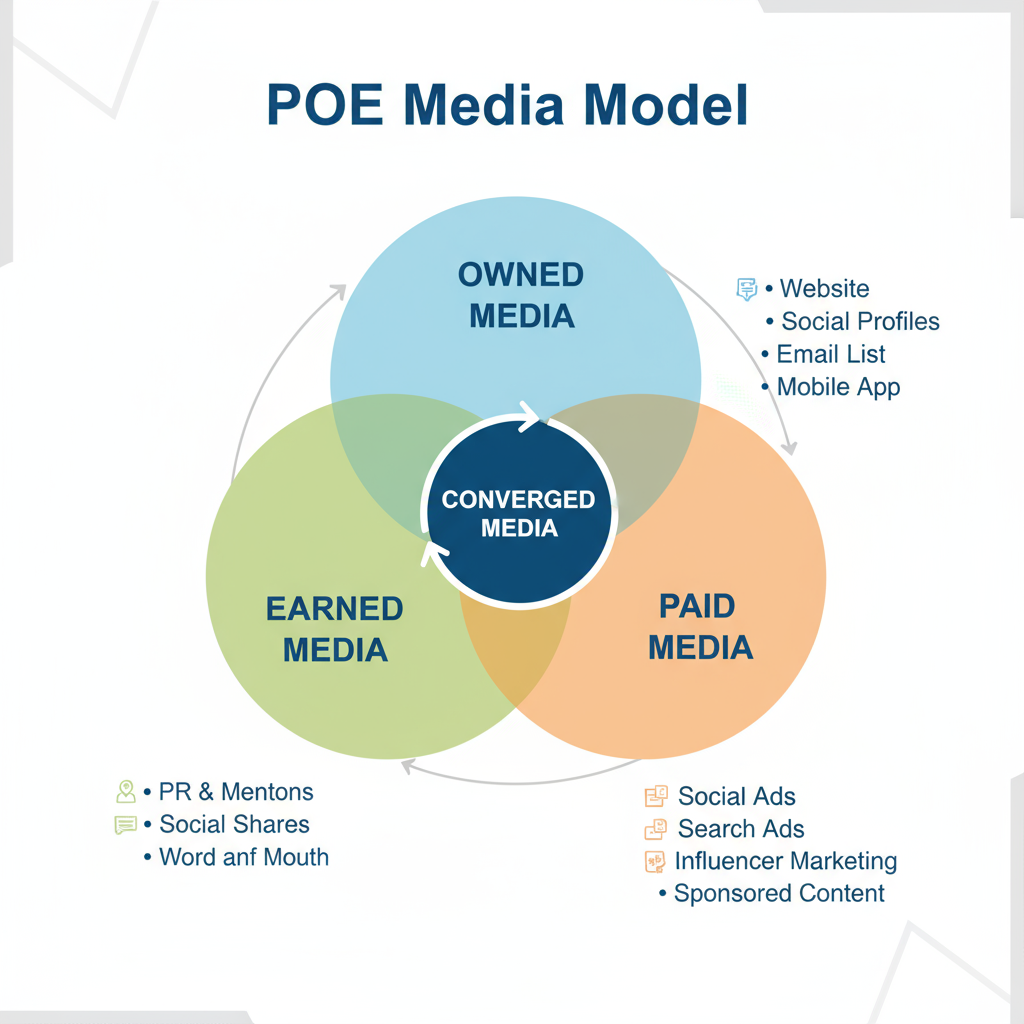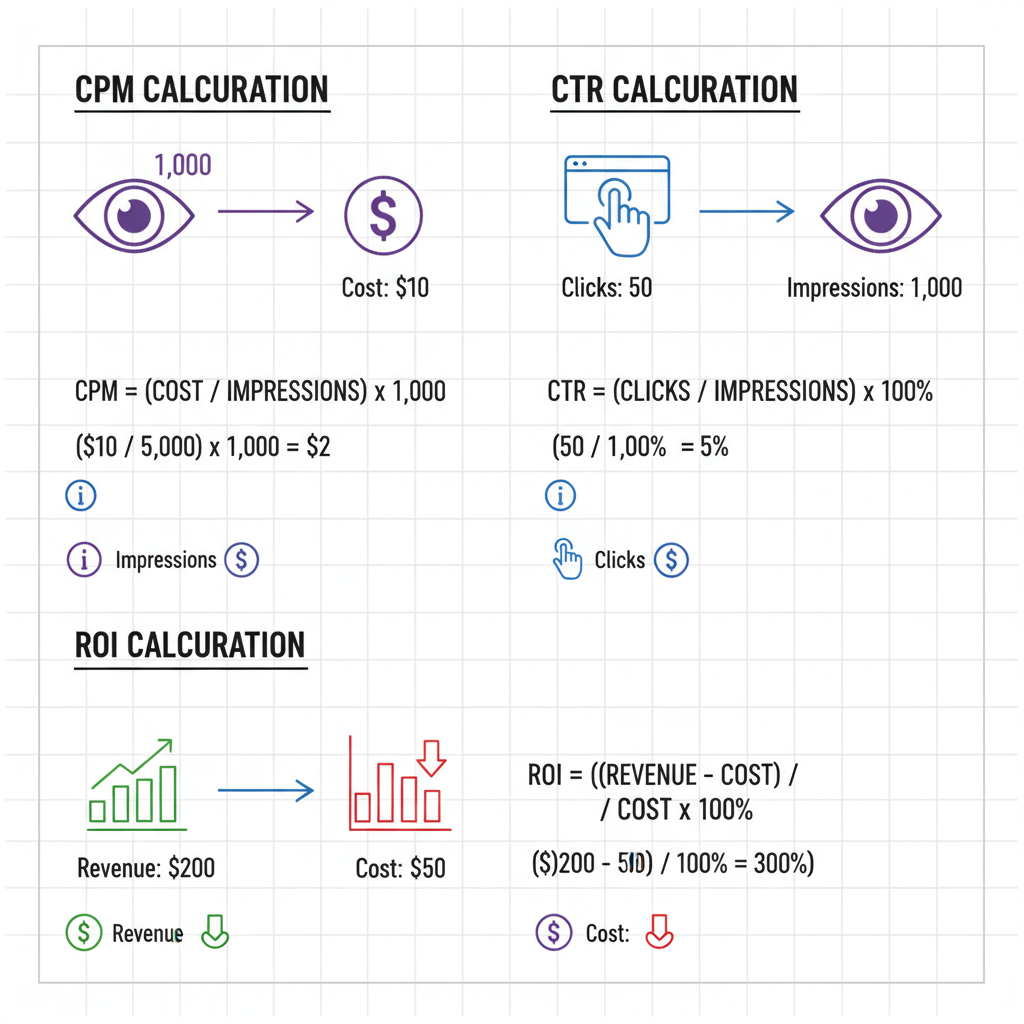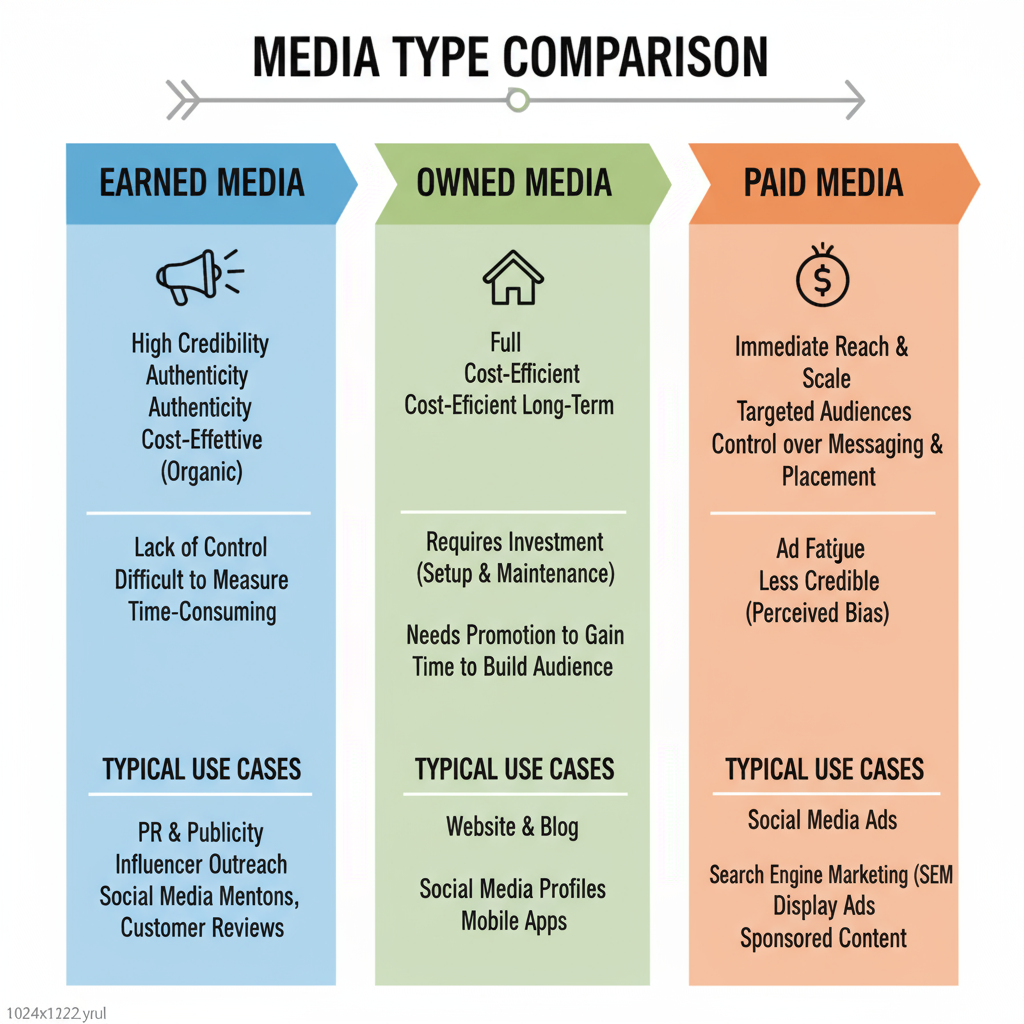Key Media Terms for Marketers and Their Definitions
Learn key media terms like earned, owned, paid media, CPM, CTR, and ROI to boost marketing strategies with the POE model and data-driven insights.

The Importance of Media Literacy in Marketing
In today’s fast-paced digital landscape, media literacy is no longer optional for marketing professionals — it is a critical skill that directly influences messaging, targeting, budget efficiency, and campaign results. Understanding essential media terms empowers teams to communicate seamlessly, analyze data accurately, and execute strategies that maximize return on investment.
From navigating multiple ad formats across channels to measuring success against business objectives, proficiency in media terminology bridges the gap between creative vision and technical execution. This guide breaks down the most important media terms, offering clear definitions, practical examples, and strategic insights to help marketers create stronger, data-informed campaigns.

---
Earned Media: Definition and Examples
Earned media refers to brand exposure gained organically through others’ voluntary promotion. This can stem from satisfied customers, media outlets, or influencers who share your content without direct payment.
Common examples include:
- Press mentions in online or offline publications
- Organic social media shares and reposts
- Unsolicited influencer endorsements
- Customer-generated content such as YouTube reviews
Earned media builds high trust and credibility because it originates from third parties. However, achieving it requires consistent brand outreach, strong products or services, and active community engagement.
---
Owned Media: Definition and Examples
Owned media encompasses all channels and content assets your brand fully controls, making it the foundation of long-term marketing efforts.
Examples include:
- Company websites
- Blogs
- Newsletters
- Branded mobile apps
- Official social media pages
Owned media offers maximum control over narrative, design, and timing. It also allows for ongoing audience engagement without recurring third-party costs, making it an invaluable pillar of sustainable marketing.
---
Paid Media: Definition and Examples
Paid media involves purchasing advertising placements across external platforms to accelerate reach and visibility.
Examples are:
- Search engine ads (Google Ads)
- Social media campaigns (Meta Ads, TikTok Ads)
- TV and radio commercials
- Display/banner ads on publisher sites
- Sponsored influencer posts
Paid media is ideal for scaling campaigns quickly and precisely, particularly when entering new markets or promoting time-sensitive offers.
---
Understanding the POE Model
The POE model—Paid, Owned, Earned—outlines a comprehensive framework for integrating all three media types into a cohesive marketing approach.

| Media Type | Control | Cost | Impact |
|---|---|---|---|
| Paid | Moderate | High ongoing | Fast reach |
| Owned | High | Moderate initial | Sustained engagement |
| Earned | Low | Indirect | High credibility |
A well-balanced media mix leverages the speed of paid, the longevity of owned, and the credibility of earned efforts.
---
CPM (Cost Per Mille)
Cost per mille (CPM) calculates how much it costs to deliver 1,000 ad impressions. It’s a benchmark for comparing media buys across formats and channels.
Formula:
CPM = (Total Cost / Total Impressions) × 1000Lower CPMs can signal more cost-efficient exposure, but quality of impressions should also be assessed.
---
CTR (Click-Through Rate)
Click-through rate (CTR) measures how many people clicked on your ad divided by total impressions, showing how compelling your ad is to viewers.
Formula:
CTR (%) = (Clicks / Impressions) × 100High CTRs generally reflect relevant targeting and strong creative, especially in direct-response campaigns.
---
ROI (Return on Investment)
Return on investment (ROI) quantifies campaign profitability, helping determine whether to scale, optimize, or discontinue an initiative.
Formula:
ROI (%) = ((Revenue - Cost) / Cost) × 100A high ROI points to effective use of media spend, whereas a negative ROI signals inefficiency or misalignment with objectives.
---
Impressions vs. Reach
While related, impressions and reach are distinct metrics:
| Term | Definition | Key Difference |
|---|---|---|
| Impressions | Total times an ad is shown | Includes repeat views from the same person |
| Reach | Number of unique individuals who see the ad | Counts each user only once |
Balancing these metrics helps optimize ad frequency while avoiding audience fatigue.
---
Media Mix and Strategic Importance
The media mix is the proportional allocation of paid, owned, and earned channels within a marketing strategy.
Benefits of optimizing this mix:
- Balances short-term and long-term ROI
- Diversifies audience reach
- Mitigates overreliance on a single source of traffic
Adaptability in media mix ensures resilience in fluctuating markets.
---
Native Advertising and Best-Use Cases
Native advertising integrates paid promotional content into a platform’s organic environment, blending seamlessly with surrounding content.
Best-use cases:
- Sponsored articles matching editorial tone
- Social feeds that mirror organic posts
- In-app recommendation widgets
Because they feel less intrusive, native ads often deliver superior engagement rates.
---
Programmatic Advertising and How It Works
Programmatic advertising is the automated buying and selling of digital ad inventory through real-time bidding, ensuring speedy, targeted placements at scale.
Process:
- Define audience and campaign criteria.
- Bidding software evaluates opportunities in milliseconds.
- Winning bids secure placement instantly.
Programmatic provides efficiency, precision, and scalability in a competitive ad market.
---
Influencer Marketing and Key Contract Terms
Influencer marketing leverages trusted individuals with engaged audiences to promote a brand.
Key contract considerations:
- Deliverables (type and quantity of posts)
- Usage rights and licensing
- Regulatory compliance disclosures (FTC)
- Payment terms and timelines
These campaigns often straddle the line between paid and earned media, offering both reach and authenticity.
---
Common Social Media Metrics
Important social media metrics beyond CTR and impressions include:
- Engagement rate: Interaction level relative to followers.
- Share of Voice (SOV): Volume of brand mentions compared to competitors.
Tracking these helps measure brand resonance and competitive standing over time.
---
Content Syndication and Benefits
Content syndication republishes your work on third-party sites to increase reach and inbound traffic.
Benefits:
- Generates qualified referral visitors
- Improves SEO via authoritative backlinks
- Exposes content to new audiences without extra production costs
It’s especially effective for high-quality, evergreen content.
---
Target Audience and Personas in Media Planning
Your target audience consists of the specific people most likely to respond to your messaging, defined by demographics, psychographics, and online behavior.
Personas are detailed, fictional representations of audience segments, enabling marketers to humanize and refine targeting.
Proper persona development leads to creative that resonates more deeply with the audience.

---
How Understanding Media Terms Boosts Campaign Success
Media literacy provides a competitive edge by enabling:
- Clear communication within teams and with partners
- Smart budget allocation informed by metrics
- Accurate performance evaluation
- Stronger creative aligned to audience insights
When teams master media terminology, they can increase ROI, strengthen brand equity, and respond strategically in an evolving digital landscape.
---
Summary: Mastering media terms isn’t just about jargon — it’s about sharper strategies, better collaboration, and measurable results. By understanding earned, owned, and paid media, as well as key performance metrics, marketers position themselves for sustained success.
Call to Action: Start applying these concepts to your next campaign planning session and watch your marketing efficiency and impact grow.

![Why Luck Matters More Than Talent for Success in Life | [Jingwei Insight]](/content/images/size/w600/2025/10/img_001-103.jpg)

